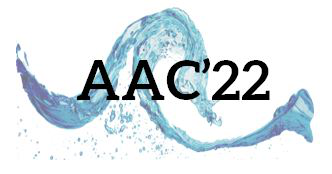Speaker
Description
Laser-driven (LD) ion acceleration has been explored in a newly constructed short focal length beamline at the BELLA petawatt facility (interaction point 2, iP2). For applications utilizing such LD ion beams, a beam transport system is required, which for reasons of compactness be ideally contained within 3 m. The large divergence and energy spread of LD ion beams present a unique challenge to transporting them compared to beams from conventional accelerators. This presentation gives an overview of proposed compact transport designs satisfying different requirements depending on the application for the iP2 proton beamline such as radiation biology, material science, and high energy density science. These designs are optimized for different parameters such as energy spread and peak proton density according to an application’s need. The various designs consist solely of permanent magnet elements, which can provide high magnetic field gradients on a small footprint. While the field strengths are fixed, we have shown that the beam size is able to be tuned effectively by varying the placement of the magnets. The performance of each design was evaluated based on high order particle tracking simulations of typical LD proton beams. A more detailed investigation was carried out for a design to deliver 10 MeV LD accelerated ions for radiation biology applications. With these transport system designs, the iP2 beamline is ready to house various application experiments.
Acknowledgments
The work was supported by Laboratory Directed Research and Development (LDRD) funding from LBNL provided by the Director, by the U.S. Department of Energy Office of Science, Offices of Fusion Energy Sciences and High Energy Physics under Contract No. DE-AC02-05CH11231, and by LaserNetUS (https://www.lasernetus.org/).
J. T. De Chant was supported by the US Department of Energy, Office of Science, High Energy Physics under Cooperative Agreement award number DE-SC0018362.

